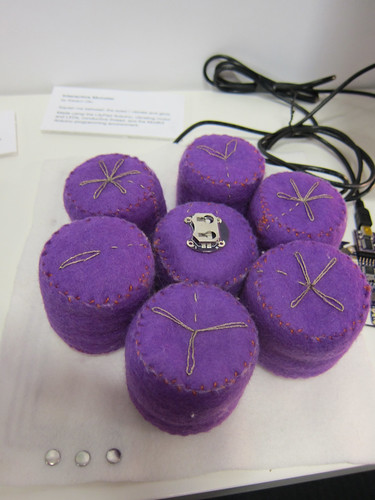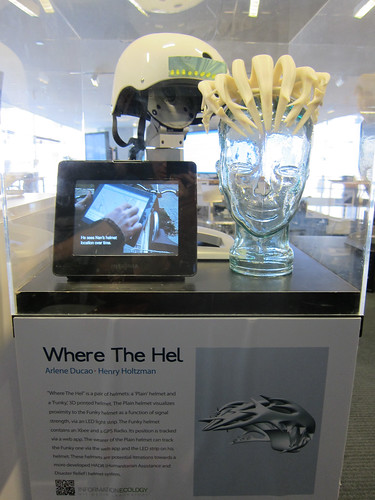In June (catching up with posts here!) I went to the MIT Knight Foundation Civic Media conference to talk about data journalism and hang out with other free speech minded, politically active, wordy nerds. The tour of the MIT Media Labs was great and super inspiring. I especially loved the high low tech lab run by Leah Buchley, the materials hacking Mediated Matter lab with tons of 3d printing materials projects, and the Fluid Interfaces and Tangible Media labs. I talked with people from Document Cloud, Investigative Reporters and Editors, and the Center for Investigative Reporting as well as lots of great people from the Ford and Knight Foundations.
Other stuff from my scattered notes: Irene Ros’s talk. Storyfying a company CTO’s responses to reports of sexist internet behavior in the javascript community. Data visualization is helpful to explain and show gendered bias in how women are described in the news. The squoot incident. I note to myself to tell Irene about the Joanna Russ antipatterns to detect and categorize misogyny.
Someone advised me to get in touch with T Mills Kelly to talk about our work on internet hoaxes. While it looks like we work on different kinds of “hoaxes” or fictional information on the net, I’d like to take a closer look at their work.
Notes on journalist’s responsibility to the people in the story, on action in human rights communities and emerging communities online, and what journalistic ethics are regarding consent in a story or for a story. Different communities have different expectations for ethical behavior and consent around identity, identifying a source.
One of the nicest conversations I had was with Sasha Costanza-Chock who demoed VozMob for me and let me sign up to try and to test their platform, which was in beta. They wrote a Drupal module which enables people to blog very easily from feature phones — i.e. if you can’t afford a smartphone, you can still take a photo, make a slideshow, or send an SMS message directly to post on a blog. They pioneered a project here at Vozmob.net:
Mobile Voices (VozMob) is a platform for immigrant and/or low-wage workers in Los Angeles to create stories about their lives and communities directly from cell phones. VozMob appropriates technology to create power in our communities and achieve greater participation in the digital public sphere.
It looks like a very carefully set up project done in collaboration with existing organizations and communities. Their structure and guide for participation and affiliation is especially great. There is a Drupal project for the Vozmob module where development is ongoing.
Even better: the vozmob project and module evolved into a launch of a hosted platform, vojo.co. Groups or individuals can set up a vojo account to blog by voice message, or text or photos sent over SMS, or to blast to a group’s members by SMS. It looks like a great tool for activists or for any group whose constituents have phones but not feature phones. This is something that would have been (and will be) very useful for people from the Occupy movement!
My own ideas that I wanted to convey to people at the conference were largely around journalism and sourcing about events that *happen on the Internet*. Data journalists often deal with large stacks of paper or PDFs that need storage, access control, and annotation as well as with plain old huge data sets. We think of events as happening in “real life” and about stuff on the net as being part of the “coverage”. But what about when the stuff on the net is the event — an Internet drama, a suddenly exploding Twitter hashtag, a political idea or a video gone viral? The stuff “happening” is happening textually or in media – it is already mediated. To write about it well, we need to source it and to source it we need ways to capture and archive it, especially as these happenings can be ephemeral; accounts or comments can be deleted. I see this as an opportunity to create tools to turn on “hotspots” of activity – for example on a controversial blog or a cluster of blogs or associated social media accounts – and record the activity happening so that sourcing of coverage about a controversy can be transparent. This might be a private, semi-private, or a site that functions as public storage like the Internet Archive. While this makes me feel as if I am re-inventing the idea of an annotatable “shadow web”, it might have more of a practical use and might be more possible with the increasing cheapness of data storage.
Well, it was a great trip to Boston, and I really appreciate getting the opportunity to participate and meet so many smart, motivated, creative people in tech and journalism.

